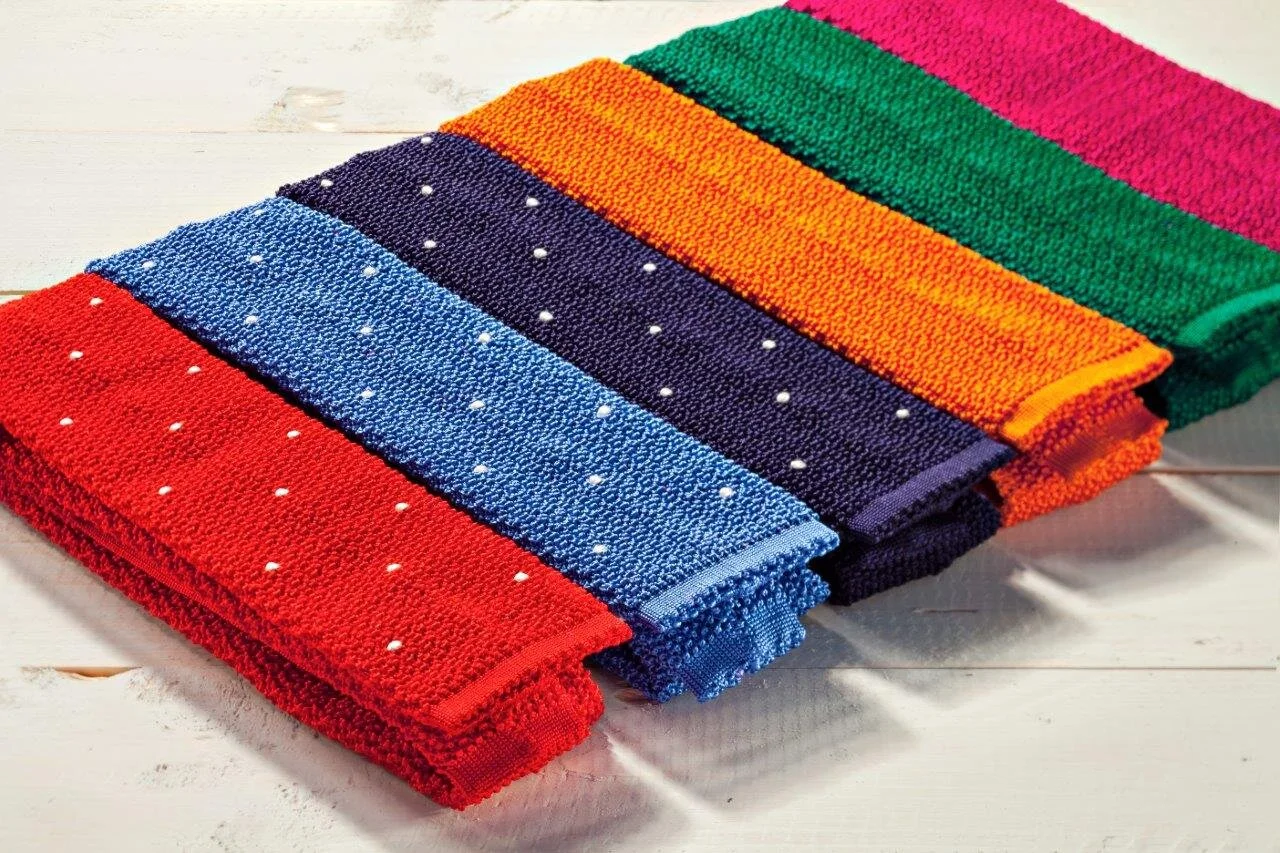Knitted ties from Ascot in Krefeld ''Made in Germany''
I’m a big fan of knitted ties. They give that little special touch to an outfit with their structure and slight casual appearance and they are formal enough to wear them with a suit. They come in many varieties like silk, wool, cashmere, cotton and mixtures of this. But as with everything I’m fairly classic on this point as well and I love the silk knitted ties the most. I have tried many suppliers in order to find the right one but one remains my all-time favorite and it is the one close to my home. I’m talking about the tie manufacturer Ascot in the German silk town of Krefeld. This company is manufacturing handmade ties for over 100 years. They do have the right machinery for knitted ties as well which they are making for decades on request of many famous fashion houses.
How the story of Ascot began
Karl Moese, the great grandfather of today’s owners, was a man with a good sense for quality and beauty. He was very elegant but a little stiff and not a very good businessman. However in 1908 he established a company with the idea behind it to manufacture the world’s finest neckwear. But if his wife Gertrud wouldn’t have been there the company wouldn’t have lived that long. His wife was a very clever businesswoman and knew how to manage a company. The ideal combination was born of a brilliant creative mind and a brilliant business mind. It was Gertrud who got the company through two world wars and Karl who kept making sure the finest neckwear would be produced.
The pair also had a family life beside the hard working. Their son Erwin was somebody who shared the passion and enthusiasm for ties with his parents. On a travel that Erwin made to England in the late 40’s he visited the famous horse races Royal Ascot where he got inspired by the well-dressed Brits over there. After seeing all the beautiful clothes and especially a lot of nice ties he decided that Ascot would be the ideal brand name for them. And so it happened and remained till today.
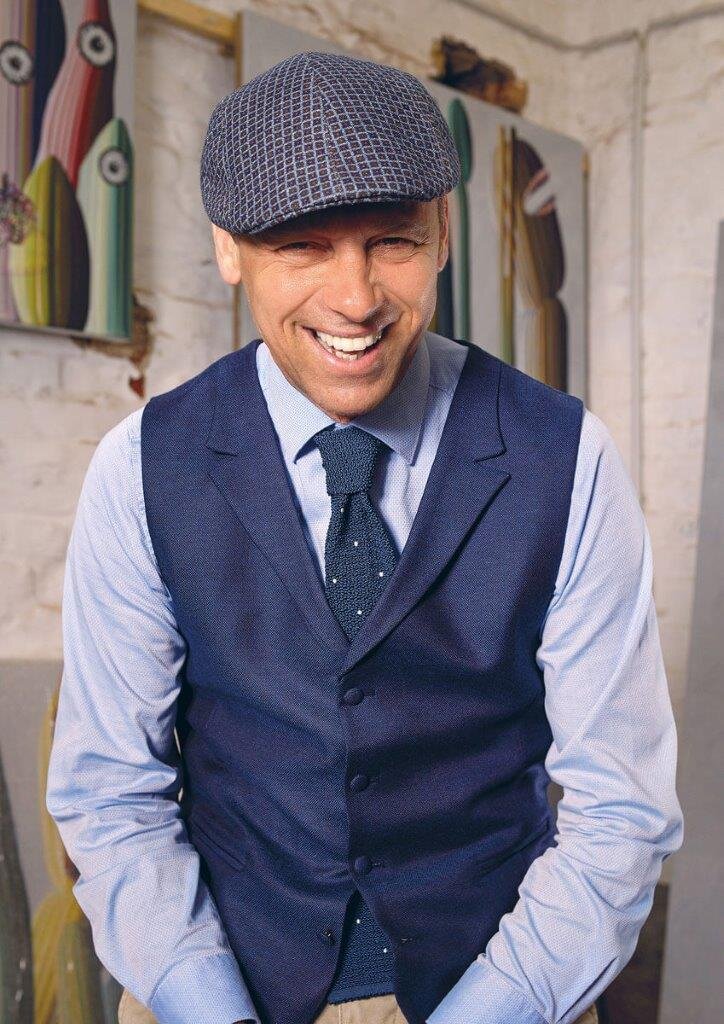
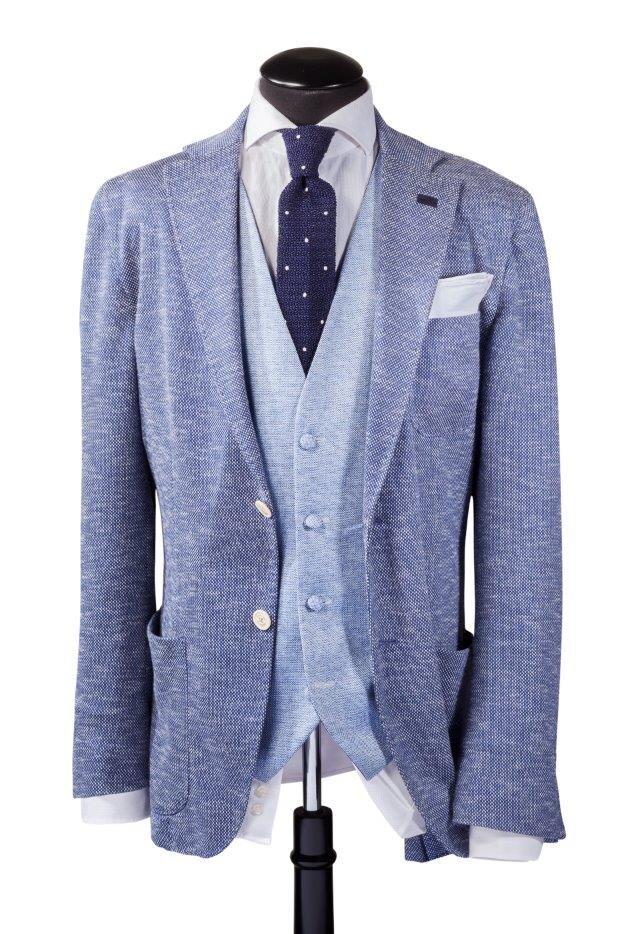
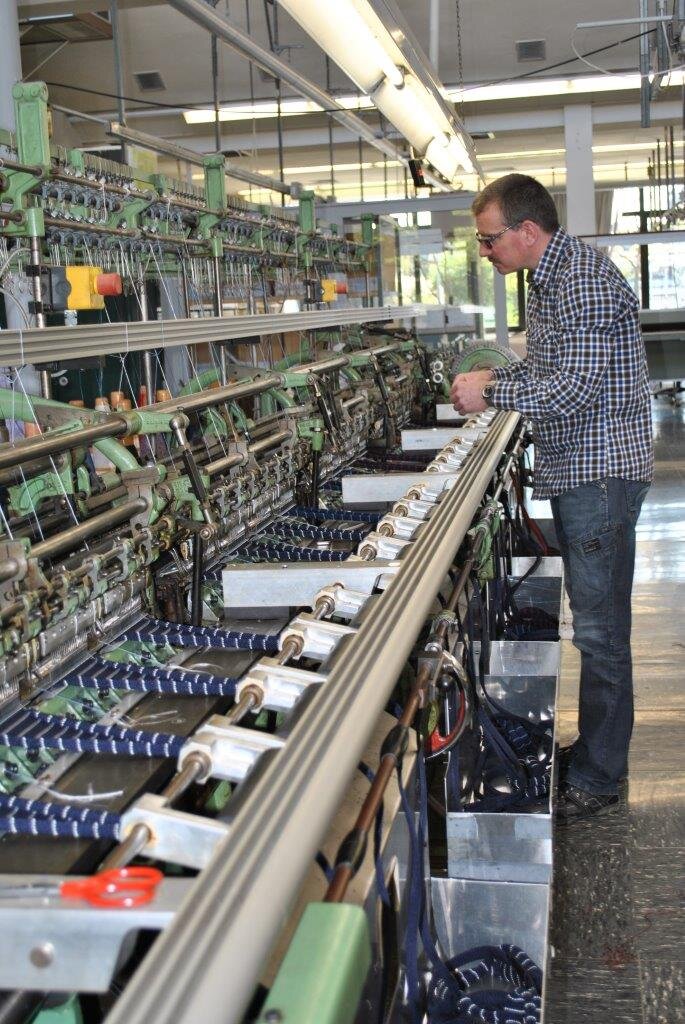
The business grew and developed further and with Erwin, being a good and empathic salesman, customers enjoyed spending time with him and buying from him. Erwin was married to Hilde and they had two children of which one of them was Wolfgang, the successor of Erwin. But before he took over Erwin send him to Lyon and to Como to learn about the trade. Lyon and Como were like Krefeld two capitals of silk weaving in Europe and ideal places to learn the trade. Upon his return, he takes over the company and tries to lift it up to a higher level. Together with his wife Helga he got two children Jan and Barbara who are in charge of the company today.
Wolfgang was joined by Hermann-Kurt Schwartz and the two managed to enlarge the company on the international map. They were the ones who started going to trade fairs like SEHM in Paris and Pitti Uomo in Florence to meet international customers and agents. This continues till today. Jan and Barbara keep thinking ahead to bring the tie into the 21st century.
The factory in Krefeld
I remember very well entering for the first time the factory in Krefeld. It actually started already on the parking from where I could see the whole process of tie making through the window. The first part Jan brought me to, was the cutting section where they cut the silks for the regular ties. They have various patterns which they use for making bow ties, ties, ascots and even for seven fold ties there is a pattern. The fabric is cut. For the semi-handmade tie the parts will go to the machine to sew the interlining to the silk and after it will be turned inside out by one of the seamstresses. Then the tie only needs to be finished off and ironed a bit and it’s ready for shipping. When the fabric goes to the department for fully handmade ties a seamstress will put in the interlining, fold the fabric around it, put pins in, so the tie stays in place and close the tie by hand sewing. A very labor intensive process which is done in a quiet room with full attention. The semi handmade and the fully handmade neckwear from Ascot is of excellent quality and I wear it since many years with pleasure. But there is something else that comes from the Ascot factory which is a specialty from them and is my beloved accessory. We’re talking here about the knitted ties.
Knitted ties
The knitted ties are made out of silk, wool or even cashmere and in various structures, colors and designs. And all of them are made on the impressive old machines that date back from the 50’s and haven’t changed ever since. But why change something if the new machine doesn’t work better at all? The old machines give the old-school quality from a time when the knitted ties were almost winning it from the regular ties. Ascot became so famous for making these knitted ties that many high-end fashion houses or sartorial brands have their knitted ties produced in the Ascot factory. Look at the knitted ties you have at home and when the label says ‘’Made in Germany’’ it can only be Ascot. Regardless what fashion house, shop or sartorial brand you bought it from. Ascot is the only company in Germany that still produces knitted ties.
After the ties are slowly knitted on the big old machines with silk, wool or cashmere yarns they are closed by the seamstresses, which is very precise work. A label is attached and they are ready for shipping.
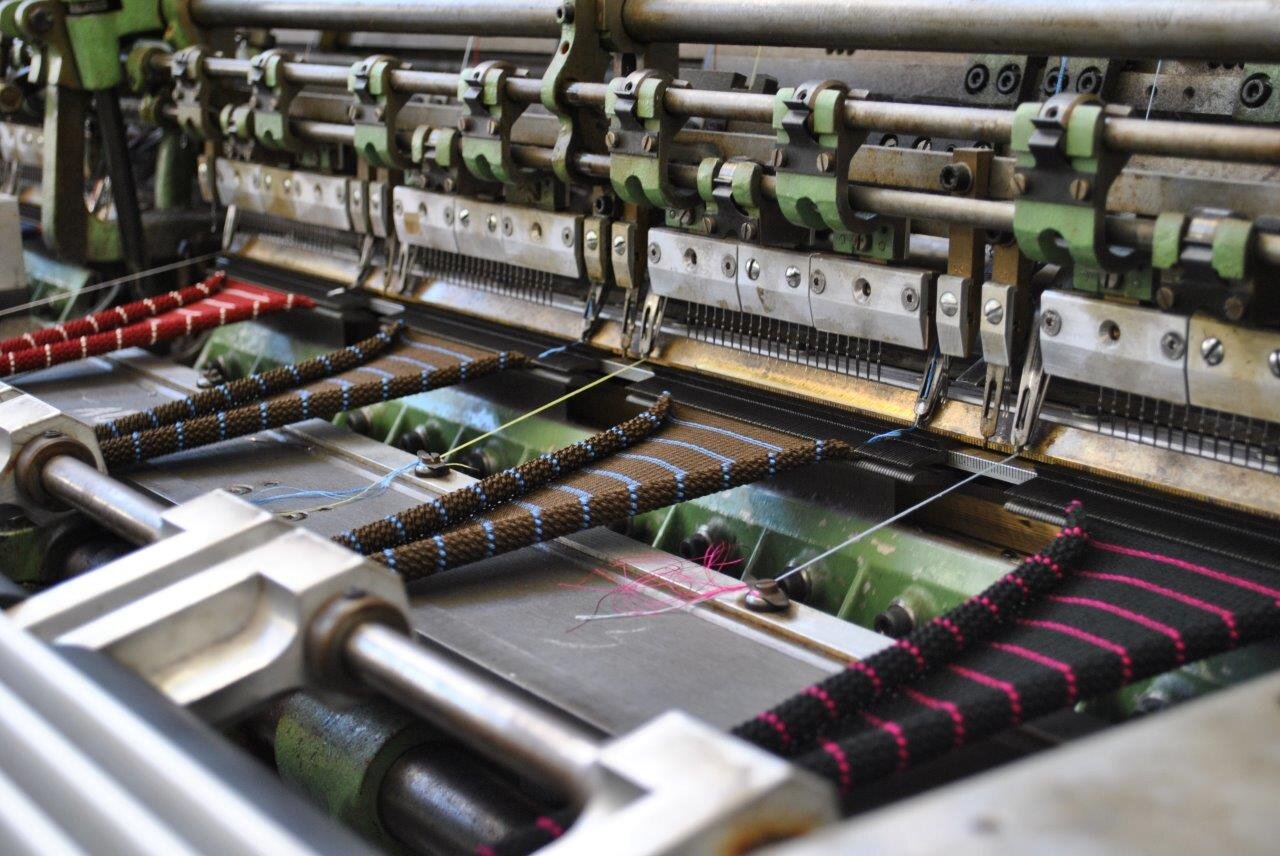
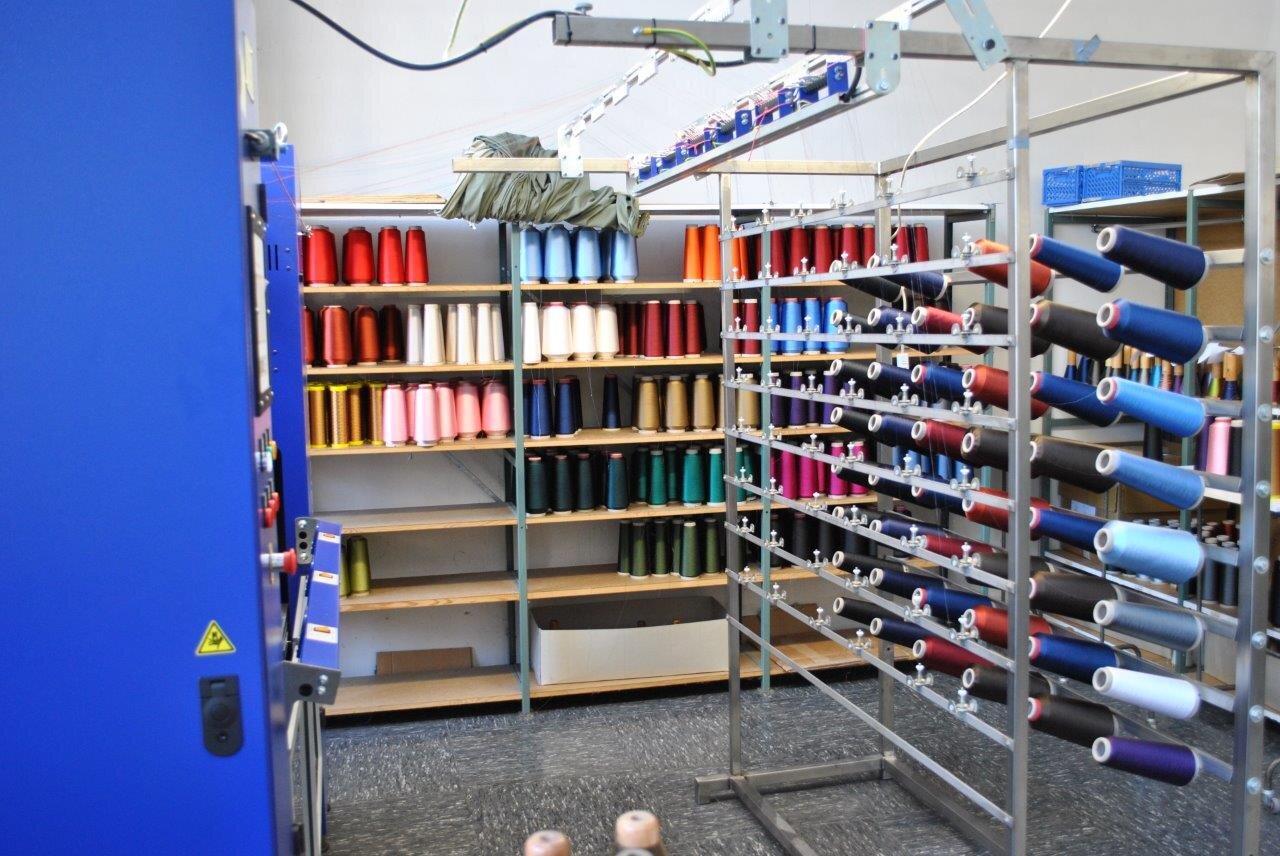
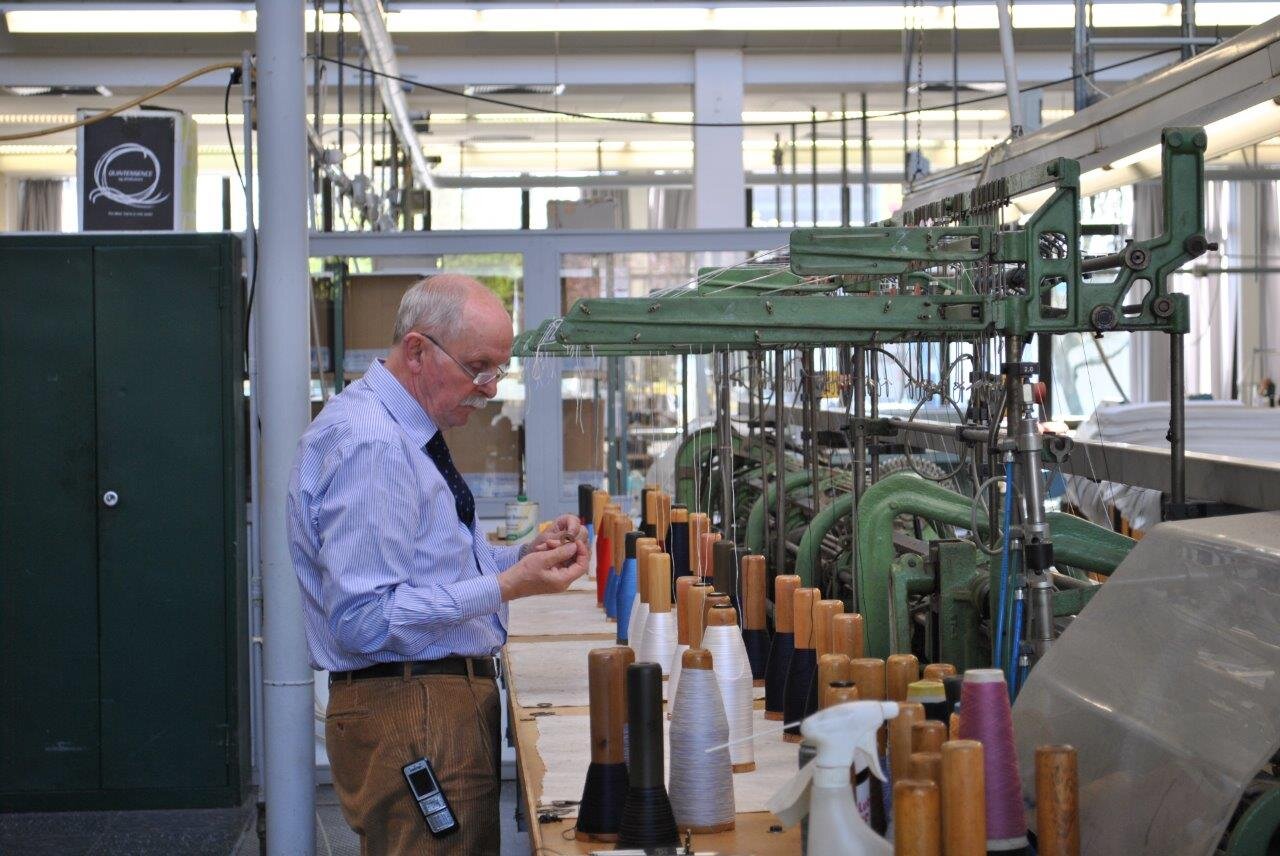


The variety of textures is the most interesting in these knitted ties. My favorite is a more crunchy and thick texture which has a beautiful French name; ‘’Cri de la soie’’. It feels very crunchy and stiff in your hands but makes a knot one can only dream off. Furthermore there are some flatter textures of which the structure on the tie looks a bit zigzagged. There is the classic knitted tie that we see more often and some more closed knitted textures which we see often made out of wool or cashmere. Of course there is a wide variety on designs. For example dots which are usually attached after knitting by a technique which is similar to embroidery, stripes which are woven into the tie and birds eye structures which are also woven into.
It became a specialty of Ascot in Krefeld. Not only are they the only one in Germany who still make knitted ties but they are also in the row of less than 10 companies worldwide who can still make this. And this while the demand of knitted ties has grown dramatically over the last year.
The last man standing - Ascot one of the last tie manufacturers in Germany
Ascot is also one of the very last factories producing ties in Germany. Many companies have transferred their production over the years abroad or went out of business. Only two companies remain to produce ties in Germany of which Ascot is the only one doing knitted ties of course. Also a lot of their local suppliers went out of business or went abroad. In a conversation with Jan about the role of Krefeld as a silk city nowadays he told me that there is just one silk mill left. Ascot is obviously working with them but the majority of their silks and yarns are coming nowadays from Italy and England, where there is still some silk production. Ascot is therefore the last man standing in Krefeld when it comes to the silk and tie trade.
www.ascot.de

